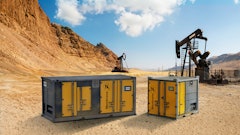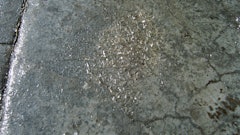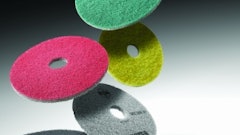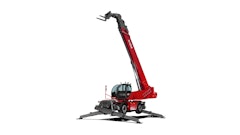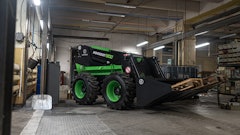Steve Shaughnessy has spent a lifetime in and around the access industry, so he knows what he's talking about when he says the key to success is keeping the focus on the customer. This knowledge will come in handy as he faces uncertain economic times in his new role as president of Canadian manufacturer, Skyjack.
"I never intended to work for a manufacturer," says Shaughnessy, who grew up in Boston, part of a family that started a rigging company in 1916 and later ran the first operated hydraulic crane rental business in New England, Shaughnessy Crane. "But when the opportunity arose, I was excited by it. Skyjack has a very customer-facing culture."
Shaughnessy's history within the aerial and rental industries is rich and varied. After working for the family business until the late 70s, Shaughnessy went to work for British Telecom in London, the only time he didn't work in the equipment industry. He says he always believed he would go back to the family business one day, but it wasn't until the late 80s, with his father on the verge of selling, that he returned to the U.S. Within months, the family decided against selling and over the next 11 years, they tripled the company's fleet and expanded to five locations. "We became very profitable, at least double the industry average," he recalls. "The goal was to serve customers and make money. Every penny went back into the business."
By 1998, however, the industry was experiencing a tidal wave of consolidation. The Shaughnessy family decided to sell its equipment rental business to NES Rentals. "We liked the management team," Shaughnessy says. "We felt it was the best fit for our employees."
Shaughnessy stayed on with the company as subsidiary president running all the east coast branches. In the fall of 2001, Shaughnessy was named regional vice president of the company, which had just acquired 39-branch Brambles Equipment Services.
Several years and career twists later, including a stint in India, Shaughnessy contacted George Burnett, then chief executive at Ashtead, and became the company's director of access business in the U.K. He remained there until 2007. "Ashtead, as a company, has a very American outlook," he says. "So it was a great fit for me."
While the access part of Ashtead's business became very profitable under Shaughnessy's direction, Burnett retired in 2007 and a resulting strategic review suggested the specialist businesses should be phased out, allowing the company to focus its efforts on general rental. "They wanted me to move to a corporate position, but an opportunity to work for Loxam came up, and I was intrigued by the idea of working for a French company."
Shortly thereafter, however, "everything went off the rails," Shaughnessy recalls. "The world was in financial crisis and everything just came to a halt. By 2009, I had decided to leave [Loxam]."
It was in September of 2009 that Shaughnessy got the call from Skyjack. "The timing was good," he says, noting, "There have been no unpleasant surprises."
Poised for growth
According to Shaughnessy, Skyjack went from 1,000 employees in 2007 to 340 today, illustrating just how severe this economic downturn has been to aerial manufacturers.
Shaughnessy says Skyjack's ability to weather the latest economic storm is partly due to being owned by Linamar Corp., a world-class designer and diversified manufacturer of precision metallic components and systems for the automotive industry. "Linamar's experience in the auto industry gives Skyjack a perspective other competitors don't have," he says.
Skyjack does have its challenges, however. "We have some holes in our boom line, such as the lack of articulated 60- and 80-foot booms, at the moment -- which can put us at a competitive disadvantage. Some companies won't go to Skyjack because of this, but Skyjack is considered one of the most reliable manufacturers because of the simplicity of its machines. And there's continuity among models. If you can work on one Skyjack model, you can work on them all. In used equipment, Skyjack is in high demand because our machines are easier to recondition."
As for the state of the company's workforce, Shaughnessy says he's received a very warm reception and that morale is good. "I expected to encounter a lack of enthusiasm but that's not been the case at all. There's a real belief in Skyjack on the part of the employees. There's no problem internally."
With a solid workforce and a product line he promises to expand, Shaughnessy has high hopes for Skyjack. "There's going to be a 'rental bulge' when our customers and prospects refleet. It won't be enough to give them the products they already know. We need to offer them more."
He continues, "Our boom line will be expanded. We're going to refocus on research and development. We want to be among the world's top three aerial work platform manufacturers by 2015. Right now, 20-25 percent of our business is international and that's going to increase."
Expanding horizons
Skyjack recently obtained its license to trade in China and will be selling product there very soon, Shaughnessy says, pointing out that Skyjack's sales and service operation will initially be based in Wuxi, where Linamar already has manufacturing facilities. Shaughnessy says the company also plans to have a sales and service outlet in South America and would like to have a physical presence in Australia as well.
For the short term, Shaughnessy predicts non-residential construction will come back after 2010, creating the need for rental businesses to refleet. "Manufacturers will need to be ready," he says. "It's a challenge we're looking forward to. I expect business to improve from last year's disappointing results."
He continues, "I have cautious optimism."




